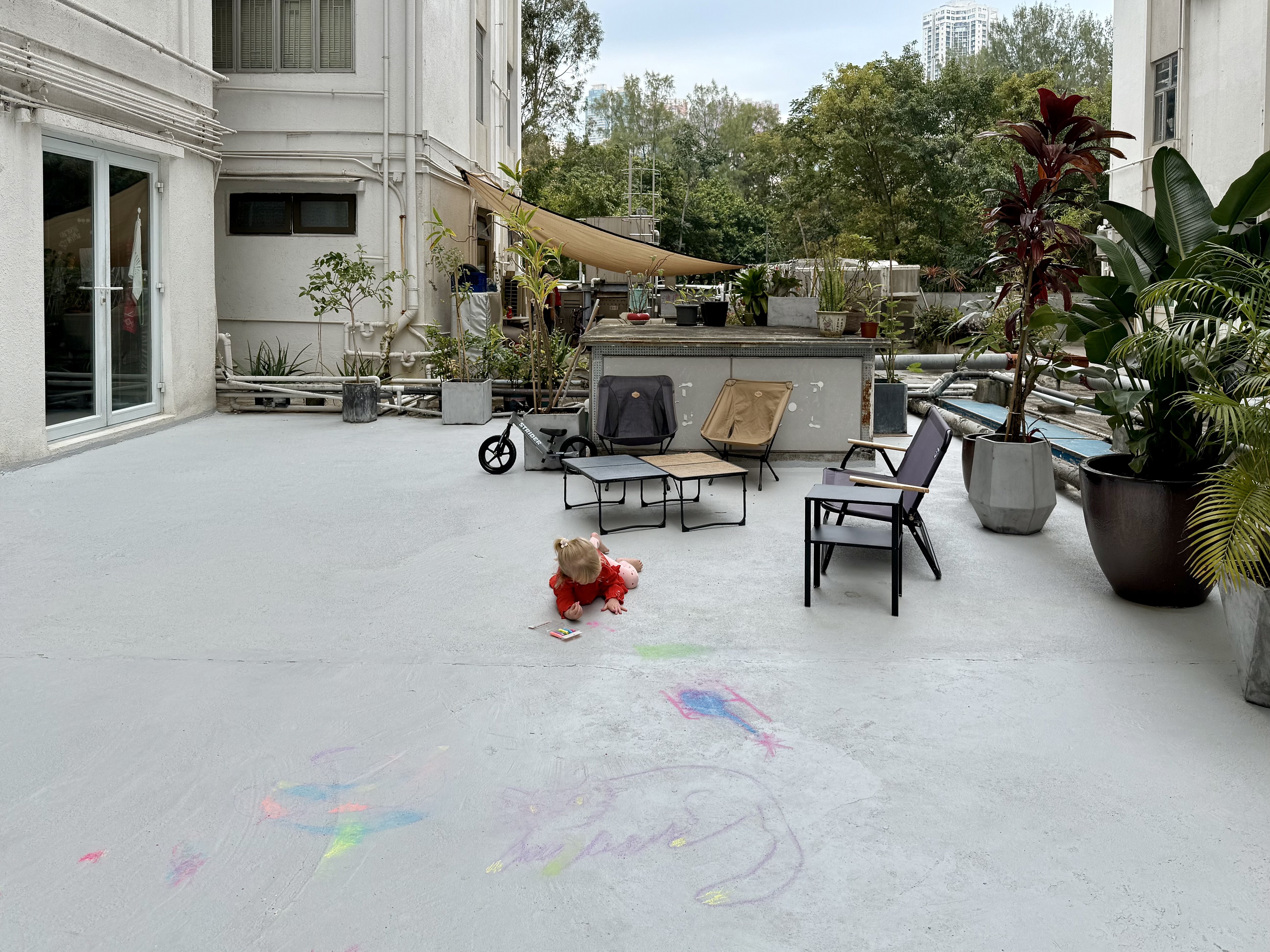In the fall of twenty four we move apartments and I remember how much the place we live shapes our view of the world. I remember how much the things we discover and the ways we relax are shaped by our physical space, its location, and our attention to its decoration. In leaving our old place I say goodbye to the view, and to the neighborhood. In smaller ways I say goodbye to the quiet corners where I sat leaned against the floor to ceiling windows and to the balcony sized perfectly for the folding camping sofa. That sofa was one of my first purchases on signing the lease, an item long coveted and suddenly ideal for this balcony twenty seven floors up, able to fit either back to the house or along the side wall, looking out at the city.
There’s a long tail indeed now of apartments that have shaped where we put things, places we’ve created snug nooks and added bookshelves. Five apartments now of finding space for a liter box, from the first one that required sealing a section of crawlspace to the most recent, tucked under the edge of a bath tub larger than we’d ever purchase on our own. We’ve hung the same art on multiple continents, and re-arranged the same light panels on a variety of walls, aiming for shapes that reflect a new start, that retain the feel of our old homes. In our first Hong Kong apartment the light panels were spaceship-esque. In the current one they are a crab, copying a children’s book we love. Our inspirations shift, and the materials remain.
Some things we’ve standardized: the foreign currency remains in neat rolls but is no longer hidden in a closet. Instead a small set of Muji drawers holds both money we may never need and the stack of transit cards, bookstore memberships, climbing gym punch cards, and all the rest that remind us of how long we’ve been gathering. We keep a shocking number of business cards for no reason save the difficulty of digitizing them, the difficulty of parting with them. Each stack, of electronic component suppliers in Shenzhen, of packaging suppliers, of film extruders, of business development people and hotel concierges is a window to a world we remember but no longer visit.
In our new space we spend weeks painting and gathering plants, re-shaping the exterior to fit our needs. In the evenings we throw frisbees, ride tiny balance bikes, kick soccer balls, and do yoga on it. In the mornings we read magazines out of doors with our coffee and tea, subscriptions we’ve resumed after a half dozen years of avoiding paper. It’s a good feeling, to go backwards in these ways, and to have an outdoor space. It’s a new home for our small folding sofa, even if a larger set of chairs would fit. Like all apartment-dwellers we repurpose things bought custom for other spaces. The desk that rolls up into a set of drawers is a great part of my new office, two houses on from where it began. The tiny wooden chair, one of the only things we brought across the pacific, is perfectly at home in it’s fifth apartment, more in use than ever before. Much like the cat, who is happier than ever before, actively hunting at almost thirteen.
In Hong Kong the mystery of prior inhabitants is stronger than ever, almost every space re-shaped by some previous resident. Whole rooms and walls have been moved and created for helpers and twins long gone. A walk-in closet replete with aircon built for a banker with a library of suits to protect, and finally an open kitchen created for someone who likes to host, who likes to share breakfast across a counter with some children, as we now do daily. We repurpose some, the closet for a bedroom, the bedrooms for an office, removing doors, adding curtains, painting and spackling until we feel comfortable. Putting down the tatami in multiple rooms I wonder if future inhabitants will be able to smell the dry grass long after it’s gone, long after we have moved on. I wonder where their children will sleep, or whether they’ll tear out this remodel, now more than a decade old, for some set of spaces still unimagined.
I think about the secrets of old apartments I can no longer remember, of all the items that now reside in a Colorado basement, or were given away on leaving San Francisco. I think of our Bunjo chair, rediscovered in the mountains last summer, a joyful piece of furniture I’d long since forgotten.
“My blue worm is in Tokyo,” says our daughter. “And my other blocks”.
For a moment, like all our American friends with houses purchased on thirty year promises, I am happy to have another place, to have a place that will see fewer future residents, where the changes we make will be discovered by friends, will be remembered by our family.
And then I remember to embrace the temporary, to relish the interplay between our ancestors in residences and our as yet unforeseen homes, still occupied by people we will never meet.
